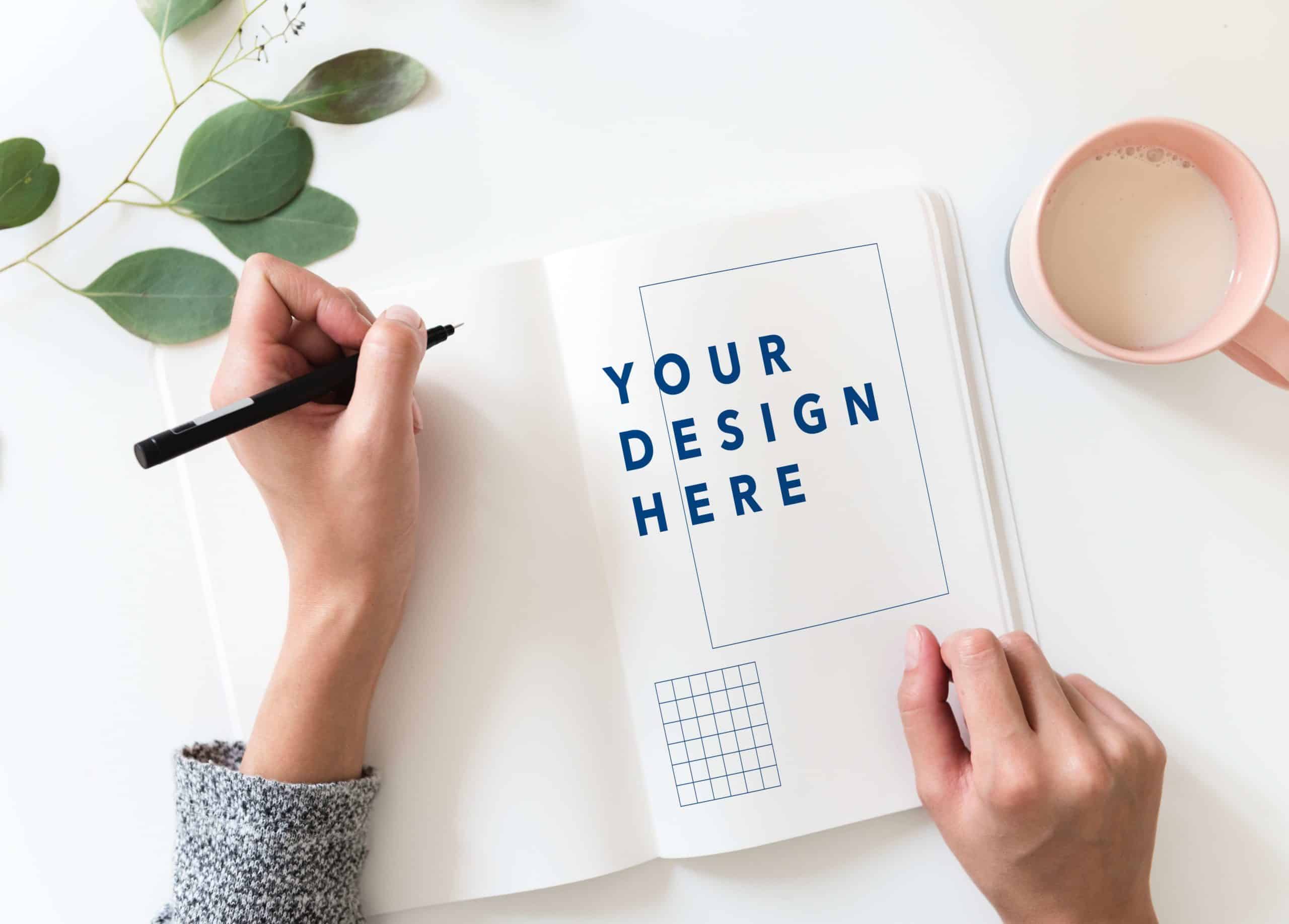World Graphics Day, also known as World Design Day, takes place on 27th April every year. This day to celebrate the talents of Graphic Designers around the world was established by the International Council of Graphic Design Associates, which was founded on 27th April 1963.
As well as celebrating the birthday of the International Council, the aim of World Graphics Design Day is to challenge designers. The idea is to get designers around the world to use design to find innovative solutions to local needs and help improve quality of life. In 2017 the theme was ‘Start Young’, introducing design concepts to kids through educational workshops. 2018 is continuing on this theme knowing that the kids of today are leaders of the future.
In honour of World Graphics Day, we decided to put together some practical graphic design tips and advice for small business owners; actionable advice for those doing their own design work in-house or those thinking of hiring a graphic designer.
We even got an expert in to provide even more pearls of wisdom – Dan Jackson, a fantastic graphic designer that we at The Printed Bag Shop work with on a regular business.

Things to consider when creating your brand
We all know big brand logos, like Nike, Facebook and Apple, but what makes these brands so instantly recognisable?
We asked Dan, The Printed Bag Shop’s recommended graphic designer, for his thoughts…
Q. Can you pick out three things you consider when you first begin creating a brand for a client?
A. There are three essential questions I always ask. If we can nail these, the project can’t fail. Without them you might as well be designing blind. These questions are:-
What is the company/person’s history? Many people start a business or a brand for a reason which is integral to that business. As a customer, we tend to traditionally buy into a brand’s history. The story behind a brand can often allow us to immerse ourselves within that brand, making the buying process easier.
Where does the company see themselves / want to be in the next 5/10/20 years? When designing, it is essential to not just apply the design to current trends but create a timeless icon for the brand. Building a brand’s identity from the history and applying what the business wants to be in the future will achieve a design that goes the distance.
What exactly does the company do? What industry does the business sit in? Market research is key; you want your brand to stand out from the crowd but there are still certain guidelines to abide by. Industries and cultures have specific trends and colours that apply to them. If you create a brand that sits well outside of those guidelines, you could potentially alienate the brand from its target audience. For example, take creating a brand for a personal trainer in the fitness industry; typically brands in this industry are sleek, modern and hard hitting. If you were to take this project and create something with muted low saturated colours and a soft bubble like font, it wouldn’t fit with the specific identifiers for this industry.
Q. What can SMEs do to make their branding stand out?
A. My top tip for a business, especially one that is product-based, is to ensure your imagery is the best it can be. Even if you’re not a photographer, there are ways around this; smart phones these days have cameras that are almost as good as DSLRs. Take a look at how the leading companies in your industry are presenting images. There are loads of apps available to help you design and perfect your images – they often have pre-set themes where you can edit them to your brand colours, add fonts and text etc.

Designing your brand in-house
Budgets can be tight for SMEs which means you often have to be many roles within your business, including the role of designer. You know you’re an expert in your field, you know what your customers need – but can you transfer all of that expertise into your branding? If it’s not as polished and professional as your business, you will be wasting your valuable time and could well harm the good reputation of your company.
Even if you are a skilled designer or know your way around software programmes, creating professional branding takes time and your priority is running your business.
We asked Dan his advice for those doing design in-house…
Q. What tips would you have for SMEs doing their own design to keep everything consistent across all their marketing channels?
A. Consistency is key. I have three tips for an SME doing their own design work.
Build a set of brand guidelines. These will allow marketing teams, printers or anyone else that works on your brand to stick to a specific level of consistency. Brand guidelines will often give you guidance on primary fonts, secondary fonts, font sizes, colour pallets, logo sizing, how not to display the logo, logo spacing, basic layouts, imagery choices and imagery editing.
Stay away from websites such as Fiver or People Per Hour unless you have a set of brand guidelines and experience in briefing. Although the pricing of websites like this is very enticing and can leave you with a design that looks passable, 9 times out of 10 you will be left with something that isn’t consistent with what your brand should be.
If you are doing your own design then keep it simple – this will be the easiest style to create without design experience. It’s also a lot easier to replicate across media channels which all require different sizes (Facebook, Twitter, Instagram). These can change so do your research on the current correct size for each platform.
Q. What are the top mistakes you see businesses making with their branding/graphic design?
A. The one single mistake I see is lack of continuity and there is nothing worse! Many businesses out there will have an amazing brand on the surface; for instance, you may see a brilliant logo for a business on Facebook, but when you click on their page, there is no continuity. The cover photo doesn’t flow on from the brand logo, nor do their posts, and then you find the website hasn’t been updated and still shows the old design. This will most likely be the same within the company; letterheads, email footers, and invoices will all have a different design where people have tweaked something without consulting the designer. This means that the brand becomes diluted and less effective.

Working with a Graphic Designer
For truly professional branding, working with a professional graphic designer will be money well spent. Many SMEs don’t have the time, the experience or the ideas to produce branding that will stand out in the crowded marketplace. That being said, you may find working with a graphic design company frustrating, time consuming and at worst unsuccessful if the process isn’t managed properly.
Here’s some of our top tips, after outsourcing our design work for years:
- You need to be realistic with timeframes; something that takes you seconds to say can take designers hours to do.
- Give the designer examples of work you like, it will help them to build a picture of your ideas and give them a good starting point.
- Don’t expect the perfect first draft; they have to start somewhere, and this is a designer’s interpretation of your ideals.
- Make a conscious effort not to be too controlling during the design process – yes, this is your business and your reputation, but creativity is what makes a great designer. Give them space to be creative, and it will be worth it.
We asked Dan for some tips on outsourcing your design work…
Q. What are the top things a company should know/think about before hiring a graphic designer?
A. Always do your research about the designer. Ask them as many questions as possible, including…
What qualifications do they have?
Did they go to university or are they self taught?
How long have they been in the industry?
What recent projects have they worked on?
What is their process for starting a new project?
Any designer can design something pretty and aesthetically pleasing, but if there is no thought behind the design then you may end up with something that’s not fit for purpose. Don’t be afraid to ask for their reasoning behind previous projects. A good designer will love to tell you their thought process, whereas a bad designer will find this a difficult question to answer.
Q. What are the benefits of outsourcing your design versus doing it in house?
A. If you are a business owner who currently does all of your own design, take a step back and think of the time you are spending on this. If you are doing a great job, I can guarantee it’s a good few hours. Now think of what you could do for your business in that time; stuff like generating more sales, which would be more beneficial to the growth of your company. You can often outsource design work for around £25-£35 per hour, and some designers will do you a monthly package deal which is less than the hourly rate. If you have employed a designer in-house but don’t have a full quota of work for the position, outsourcing the work instead can mean funds being re-allocated to other areas of the business to aid growth.

And finally…why should you care about this stuff?
Q. What do you think the positive impacts are of making quality design a focus for SMEs?
A. By far, making quality design will be one of the biggest factors of making your SME the best it can be. The way your potential customers perceive your brand is essential; if they see quality, well thought-out design, it will make their decision to trust and believe in your brand ten times easier. There is nothing more damaging to an SME than having poor design, and when it comes to choosing between that and a company that has great design, the customer is far more likely to be drawn to the company who has invested in their branding. On the whole, they will be perceived as a more thoughtful, genuine company who can offer a better service or product.
If you’re currently on the hunt for a graphic designer to help you with your branding or any other design work, we’ve got a treat for you!
We’ve teamed up with Dan from DFJ Graphic Design to give you a special discount code if you choose to work with him on any of your graphic design needs. All the graphics included in this post are previous examples of his work, and you can see more of his portfolio over at his new website by clicking here.
We’ve worked with Dan for years and are more than happy to recommend him. He’s helped us produce a desktop calendar for our clients, a new look for our digital branding, all the offer graphics you’ve seen from us this year, and a lot of our social media images too.
If you decide to work with Dan, quote the code TPBS at any point whilst in touch with him and you’ll receive 20% whatever graphic designs he’s producing for you! Email him at dan@dfjgraphicdesign.com to get started!



